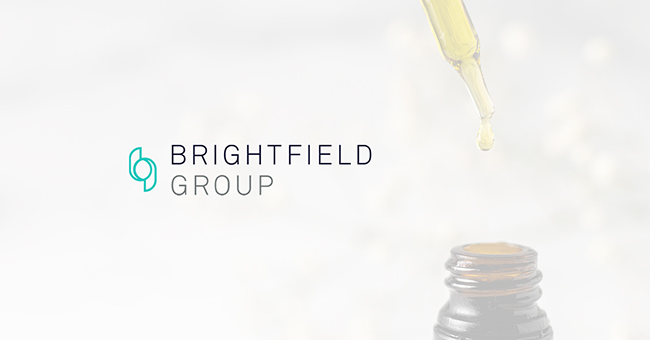As pandemic restrictions begin to lift and consumers slowly return to “new normal” habits, the U.S. CBD market is expected to see a strong recovery throughout 2021 while laying the groundwork for the market to return to its “explosive and volatile growth” by 2022, according to a recent report by Chicago-based intelligence firm Brightfield Group.
Pandemic’s Lasting Impact On Industry Patterns
Based on the findings of the report, the COVID-19 pandemic has influenced both where and how consumers buy products as well as what types of products they chose to purchase. E-commerce CBD sales rose 38% in 2020, outpacing all other sales channels as the impact of stay at home orders took effect. Even though normalcy may be on the horizon, Brightfield doesn’t anticipate consumers to immediately revert to pre-pandemic purchasing habits.
The adoption of e-commerce poses limitations for the CBD drink market, as these items are more difficult to ship compared to other CBD products available in smaller packaging. According to the Brightfield report, the CBD drink market grew by only 14% in 2020, compared to the 1276% increase in 2019. Much of this can be attributed to the rise in e-commerce which carried the added limitations of shipping hassles.
“E-commerce is sticky. Once people get something into their ‘Subscribe + Save’ they tend to come back and continue to make that purchase so we do expect that channel to continue to grow,” said Bethany Gomez, Managing Director at Brightfield Group. “However, we do expect most of this year’s growth to come from brick and mortar channels. There’s nowhere like brick and mortar for discovering new products. People see them on shelves and impulse purchase – that’s really what drives a lot of consumers to start trying CBD products for the first time.”
Consumables Predicted To Take The Lead
The drink market is anticipated to expand about 70% this coming year as consumers return to in-person shopping. Drinks, gummies, and other edible CBD products are expected to be the fastest growing CBD product type in 2021 with 44% year-over-year growth. According to Brightfield, the most popular infused drinks are mid-to-low dose offerings (20-30mg CBD) across categories including sparkling waters, water, energy shots, powdered concentrates, kombucha and coffee.
These products are typically used by experienced or regular CBD users who are comfortable exploring other methods of consumption, Gomez said. The past year also saw demographic shifts in frequency of use, with Baby Boomers decreasing their CBD use and Gen Xers and Millennials ramping up theirs. According to a separate report by Brightfield, these two generations were the most stressed in 2020 due to job losses and increased time at home caring for children. Gomez said these users are attracted to CBD drinks because they offer relaxation and can be consumed in social settings without the negative effects associated with alcohol.
FDA Guidance Anticipated
In March the first phase of a long-awaited study on the impact of CBD on liver toxicity was presented to the FDA with the second phase anticipated to be released by the end of 2021. The FDA has been hesitant to issue guidance on CBD use until it had further data on how CBD affects liver function in addition to the matter getting sidelined by more pressing, pandemic-related matters, said Gomez.
“There is additional legislation that has been posed which can force the FDA to issue guidance and is expected to go through during this Congress,” said Gomez. “There are more than 17 million Americans using these products on a quarterly basis that are currently being unregulated. One way or another there is going to need to be regulation to protect the consumer safety of those 17 million Americans.”
CBD brands and CPG companies have been strategically building brand awareness as they await FDA guidance. CBD brands have begun releasing non-CBD products, such as Weller, Recess, and Cloud Water, in order to get shelf space at large retailers who will not carry their CBD products until guidance has been issued, according to Gomez. Similarly, CPG companies looking to enter the CBD space have released lines of functional beverages, such as Pepsi’s Driftwell, that will likely have CBD line extensions once these products are regulated, according to Gomez.
Functional Ingredients Infiltrate CBD Industry
In the meantime, there has been an increase overall in CBD consumables paired with immune-boosting ingredients such as elderberry, echinacea, vitamin C, ashwagandha root and zinc. According to the report, users favor CBD products paired with functional ingredients. Gomez also expects more CBD product innovations in the athletic performance and alcohol alternative categories throughout 2021. CBD brands and entrepreneurs are shifting their strategies with new product innovations to cater to the rise of new consumer groups.
“Baby Boomers don’t care about ashwagandha and spirulina,” said Gomez. “The success that brands like Recess and other brands like them are experiencing is from their activities on social media through the community and brand they are developing.”
While consumers are enjoying the benefits of the additional functional ingredients, brands are questioning whether CBD is really an industry, “or are we just an ingredient,” said Gomez. However, she is confident the emerging market will thrive on its own once the pandemic-induced economic uncertainty dissipates.
“We are right on the cusp of a lot of growth in this space as the world starts to open up. We expect to see some strong recovery in 2021 with strong growth expected in 2022 and beyond as we get some additional guidance and these products get pumped out through a wider variety of retailers.”
